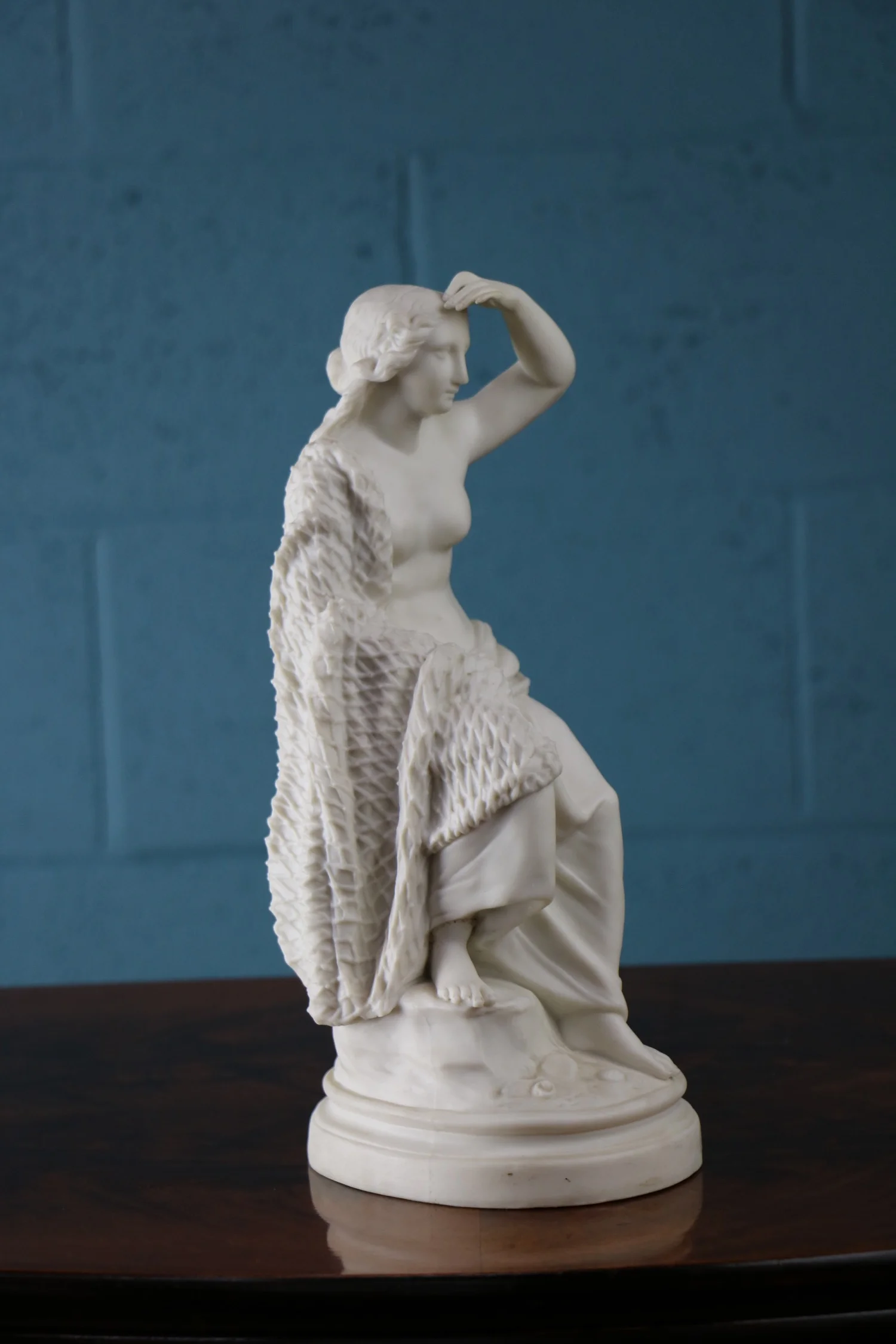- Sold Eclectibles
- Victorian Parian ware figurine
Victorian Parian ware figurine












Victorian Parian ware figurine
A Victorian Parian ware woman with cloak. This piece has very fine detail, particularly on the cloak. Unmarked. In very good condition with no visible damage or restoration.
Dimensions: H32cm W16cm D16cm
Parian Ware was very popular with the Victorians. By the end of the 19th Century, every Victorian parlour would have had at least one piece of it, typically small-scale copies of busts of literary and political figures, as well as its decorative vases, boxes and figures.
Potters made Parian statues by slip-casting. They poured liquid porcelain, or slip, into a mold and allowed it to harden enough to coat the walls of the mold. They then poured out the excess, creating a thin-walled, hollow form.
Potteries all over Britain produced Parian pieces. Leading makers included Copeland, Minton, Worcester, Wedgwood, Goss, and Robinson and Leadbeater. Much of the statuary was copies of the work of the period’s finest artists, who approved of the reproduction of their art in Parian.Generally, only the major Parian makers marked their pieces and then it is only usually statuary. Many non-statuary pieces weren’t marked at all.
A Victorian Parian ware woman with cloak. This piece has very fine detail, particularly on the cloak. Unmarked. In very good condition with no visible damage or restoration.
Dimensions: H32cm W16cm D16cm
Parian Ware was very popular with the Victorians. By the end of the 19th Century, every Victorian parlour would have had at least one piece of it, typically small-scale copies of busts of literary and political figures, as well as its decorative vases, boxes and figures.
Potters made Parian statues by slip-casting. They poured liquid porcelain, or slip, into a mold and allowed it to harden enough to coat the walls of the mold. They then poured out the excess, creating a thin-walled, hollow form.
Potteries all over Britain produced Parian pieces. Leading makers included Copeland, Minton, Worcester, Wedgwood, Goss, and Robinson and Leadbeater. Much of the statuary was copies of the work of the period’s finest artists, who approved of the reproduction of their art in Parian.Generally, only the major Parian makers marked their pieces and then it is only usually statuary. Many non-statuary pieces weren’t marked at all.